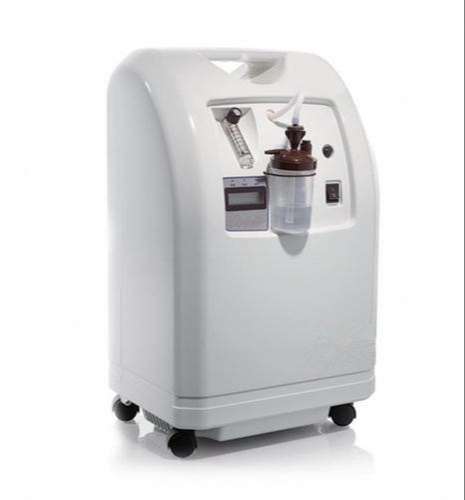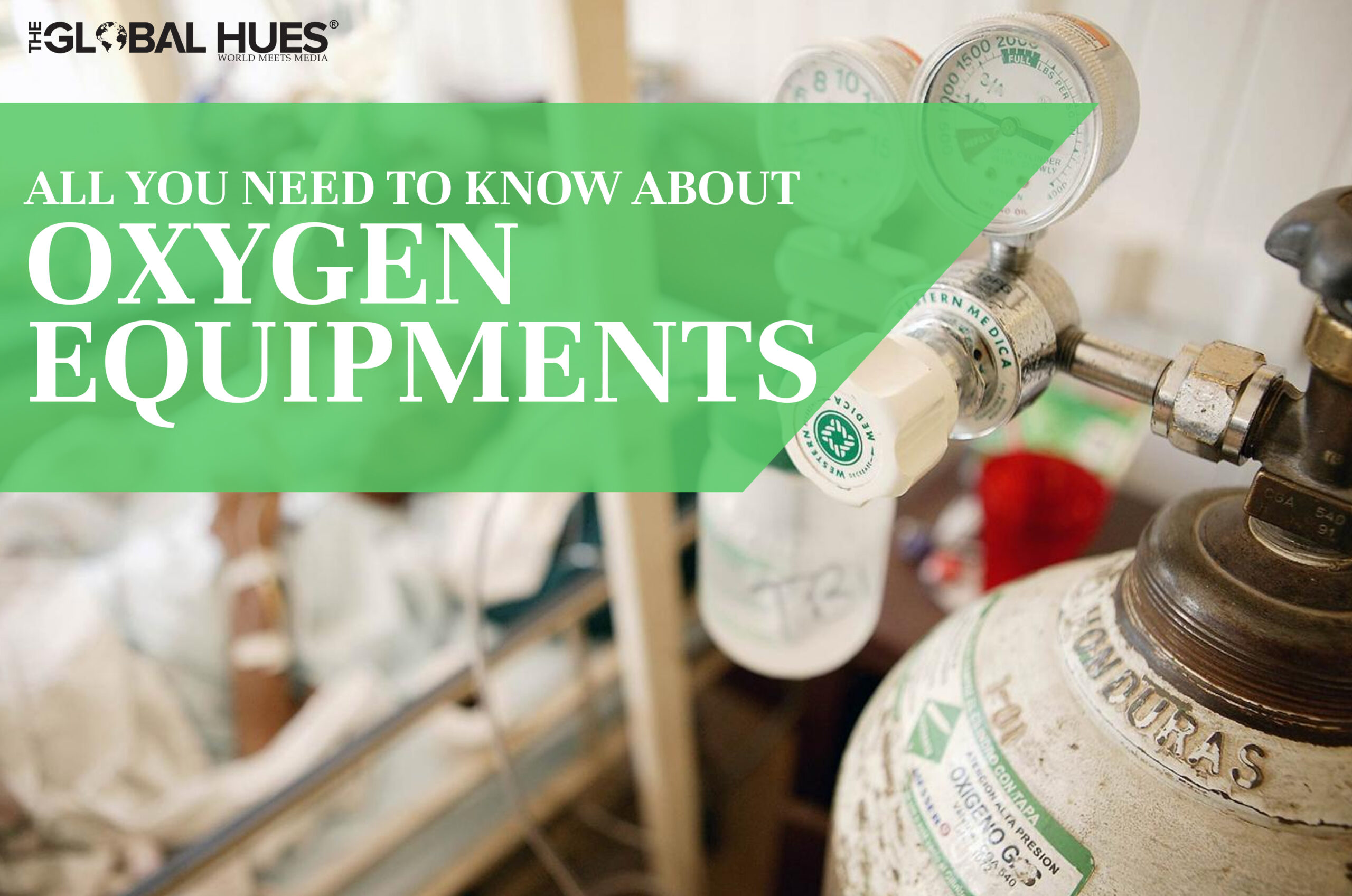Due to the second wave of coronavirus, the country’s healthcare system is working on its peak capacities. And there is a countrywide shortage of oxygen equipments as 80 percent of people hospitalized because of COVID-19 need between three to fifteen liters of oxygen per minute and the rest 20 percent need more than 20 liters of oxygen per minute. With oxygen’s demand rising among people, it is also creating numerous doubts and fuelling curiosity.
-
How does an oxygen cylinder work
An oxygen cylinder is a vessel for storing oxygen, they are used to store gas for medical breathing gas at medical establishments or homes. Breathing oxygen is delivered from the storage tank to the users by an oxygen mask, nasal cannula, full-face diving mask, oxygen tent, and hyperbaric oxygen chamber. Air is sucked inside a compressor after filtering so that there are no impurities like dust particles. Inside a compressor there are two valves, the Inlet valve sucks air in, and then with the help of a piston the air is compressed to very high pressure, and the compressed air is then released through the discharge valve.
During compression, the air heats up because pressurizing a gas by compressing it into a container where all the molecules are put into a smaller volume of space increases temperature. Then, the warm compressed air is passed through a freezing unit with the help of liquid nitrogen into the coil tube to lower the temperature, the temperature of the compressed air falls up to -200 degrees Celsius.
The cold compressed air is then sent to the separator where carbon dioxide is separated as dry ice, the air free from carbon dioxide is sent through an expansion turbine where the air expands and turns into liquid. In the end, liquified air is sent into an air distinction column where it slowly warms up and it separates various components of air like nitrogen, argon, oxygen, etc. Due to oxygen’s high boiling point, it settles down at the bottom of the air distillation column, then finally the liquid oxygen is transported by filling into aluminum or cryogenic containers.
-
Potential harm to lungs caused by oxygen equipments
The purpose of oxygen in human bodies is to convert food into energy so the cells can function properly, this chemical process is called cellular respiration. Air in the atmosphere contains 20 percent of oxygen, the right amount of oxygen for survival. With too little oxygen human bodies stop functioning which causes death but too much oxygen is also harmful. When breathing in oxygen the microscopic oxygen molecules attach to a transport blood cell called hemoglobin carries oxygen throughout the body to all the cells and when 100 percent oxygen is inhaled in, the blood cells can not work fast enough to transport the oxygen out of the lungs.
Instead of being carried away through the body by hemoglobin, the oxygen binds to surface proteins in the lungs, aside from damaging lungs, oxygen also affects the central nervous system and can cause retinal detachment in the eyes. People relying on supplemental breathing should closely monitor the levels of oxygen being inhaled or serious complications can arise.

-
How is an oxygen concentrator different from a cylinder?
An oxygen concentrator is a medical device that concentrates oxygen from ambient air, filters it through a sieve, releases the nitrogen back into the air, and works on the remaining oxygen. The oxygen is compressed and dispensed through a cannula which is 90-95 percent pure. The pressure valve in concentrators functions in operating the supply, ranging from 1-10 liters per minute. Oxygen cylinders can run out of oxygen but an oxygen concentrator will never run out of oxygen as long as it has accessible air and a supply of power. An oxygen cylinder can begin to leak, and oxygen-saturated air increases the risk of a fire.
Oxygen concentrators are designed for convenience and portability so it weighs much less than oxygen cylinders, oxygen cylinders are bulky and heavy. Prices of oxygen concentrators are largely upfront but for oxygen cylinders, the costs are incurred over time and purchased periodically as needed.
-
How to use a portable oxygen equipments set it up at home
Firstly, make sure that the tank is fitted in the cart by tightening the screw on the mounting ring which protects the tank from falling and causing any damage or injury. Then check the expiration dates of the oxygen marked with a sticker on top of the cylinder. The next step is installing the regulator which fits right onto the tank secured with two pins into the two holes. Further one should attach the tip of the valve mask and fix it to the metal nipple underneath the regulator and finally turn on the tank for using the oxygen. Check the tank once per month by opening then closing the tank and adjusting the regulator which will release the oxygen.
-
Guide to buy the right oxygen equipments
Before buying oxygen equipment, always check the oxygen saturation using a pulse oximeter which will help one to understand how frequently and how long one should use any oxygen equipment. Decide the type of concentrator one wants to buy, a stationary home oxygen concentrator or a portable oxygen concentrator. Before buying an oxygen concentrator one should know about the supplemental oxygen need in the body, which is prescribed by doctors in liters per minute. The capacity of the oxygen concentrator must be higher than the requirement. Always look for an oxygen concentrator with Oxygen Purity Indicator and locate the service centers before buying.
-
Do’s and don’ts for oxygen cylinders
Always read the instructions on the cylinder before handling it, while transporting oxygen cylinders wear protective gear, strap the cylinder securely and ensure the valves or caps are fixed and locked. Open gas only when required, keep it at a safe distance from the patient, and keep the room ventilated when in use to reduce the risk of fire. Pressure and flow should be fixed under expert supervision and refill or use certified medical oxygen cylinders. Don’t use relabelled or repainted cylinders and don’t roll them on the ground, it should always be in an upright position. Don’t use alcohol-based sanitizer on the cylinder and in case of leakage don’t self-repair.
-
Medical oxygen gas plants
There are primarily three categories of oxygen sources in India currently. These are the Air Separation Units (ASU) that are utilized for commercial objectives, Pressure Swing Adsorption (PSAs) for manufacturing on a moderate scale, and Oxygen Concentrator, which is used to manufacture medical oxygen. The major oxygen manufacturers in the country include Inox Air Products, Atul Oxygen Company, Aims Industries, Assam Air Products, Vinayak Air Products, Scoop Industries, Hiltone, Raj Gas Industries, Universal Air Products, Popular Carbonic, Taiyo Nippon Sanso India, Phoenix Gases, Essem Gases, P K Carbonics, Rukmani Metals and Gaseous, Kolhapur Oxygen & Acetylene, Raigad Carbides, Goyal MG Gases, and Kashmir Gases, Linde India.
-
Usage of oxygen equipments, in which industries they are used
Oxygen cylinder and gas masks are used to facilitate respiration, it is used by firemen, sea divers, astronauts, and aviators. Oxygen cylinders are provided to patients to facilitate artificial respiration, it is also a major constituent of carbogen given to patients to stimulate natural breathing. When hydrogen is burned in the presence of oxygen it produces oxyhydrogen flame and, when acetylene is burned in the presence of oxygen it produces an oxyacetylene flame, these are used for welding and cutting of metals. It is also used for removing impurities from the substances that are used as raw materials in the steel industry.
-
Are oxygen cylinders safe?
Medical oxygen in oxygen cylinders is safe to use for medical purposes which is either in liquid or gaseous form. But it is an oxidizing agent that can result in a fire or explosion if not handled properly. So when handling oxygen cylinders make sure that you are well aware of the do’s and don’ts.
- COVID-19 Variant Omicron- A New Cause Of Concern
- Covid-19 Changing The Face Of Healthcare In India
- Impact Of COVID-19 On Early Childcare And Education
- Displaying Courage And Resilience: Women Combatting Covid-19
- Health And Hygiene- To Triumph Over Covid-19
- How Is The New Strain Of Covid-19 Impacting The World?
- Manufacturing And Supplying The Life Saving Gas: A Guide To Setting Up Oxygen Plants
- Covid Outbreak In China: Are We Taking Covid Too Lightly?
- NGOs & Civil Society Support Crucial For India’s Recovery From Covid-19 Pandemic




